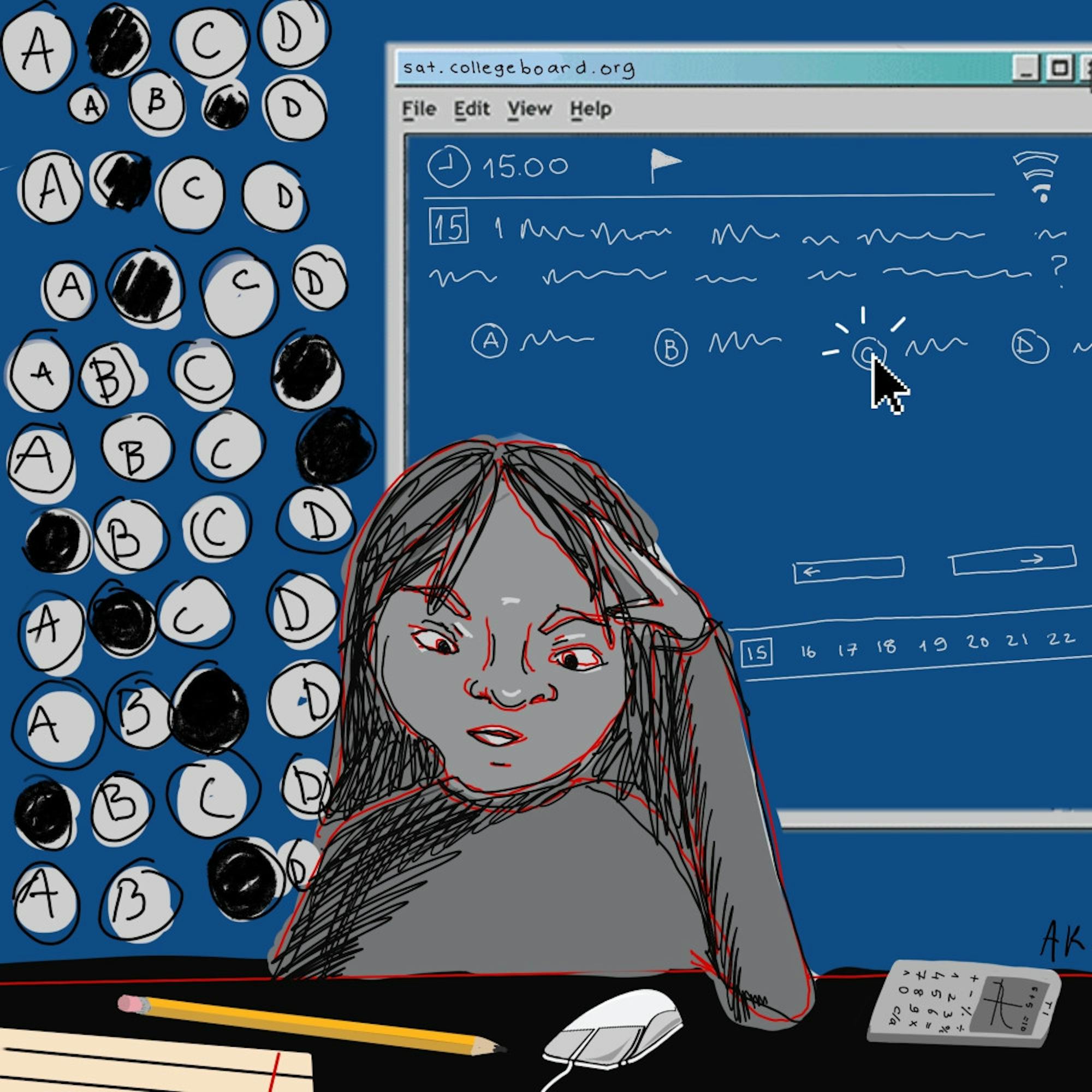When the decision for colleges and universities to go test-optional spread rapidly through the country like a wildfire due to the COVID-19 pandemic, the SAT started to lose its relevance. Harvard University decided to go test-optional until 2026 to limit the weight of standardized tests in the admission process due to their biased nature, which disproportionately disadvantages students of color and those from low-income families. In 2020, universities in the University of California system decided to steer away from the SAT and ACT permanently for similar reasons.
While some students took this opportunity to pursue other passions which would enhance their applications, 83% of surveyed students indicated a preference toward having the option to submit test scores. This reveals that the high school graduating class of 2022 continues to place value on the SAT. Despite the high-stress environment that testing can cause, students are hesitant to relinquish this opportunity to bolster their applications. This comes from the uncertainty over whether those who decide not to submit test scores will be disadvantaged over those who do.
The College Board’s announcement about the SAT shifting to a digital platform could be seen as an effort to acknowledge the growing lack of confidence in the exam.
“In a largely test-optional world, the SAT is a lower-stakes test in college admissions,” Priscilla Rodriguez, vice president of College Readiness Assessments at the College Board, said.
Recognizing the shift in consensus over the importance of the test, the College Board is now attempting to make the testing experience align with its smaller role in the college admissions process. The changes, which will go into effect in the U.S. by 2024 and globally by 2023, are meant to meet the evolving needs of current students and teachers alike.
This decision was made in light of results that came from the College Board’s fall pilot program which received positive feedback due to the new exam’s low-stress, time-efficient quality. The exam is now only two hours long and includes reading passages that are more brief, allowing students to have more time per question. Additionally, calculators are a provision for the entirety of the math section. The student response to this pilot revealed that these changes improved concentration and lessened time-related anxiety.
Furthermore, the College Board is attempting to address the inequities in accessibility through this new test format. For example, they are trying to level the playing field for students with financial need by providing them with the technology necessary to take the test.
Some critics argue these efforts by the College Board are not sufficient to remedy the test’s underlying bias against low-income students and students of color. These new policies have yet to address the advantage that high-income households have through expanded test prep options like tutoring and being able to take the test multiple times. Its lack of accommodation for students with disabilities has yet to be clearly addressed .
Whether these changes to the SAT create a more equitable process, and whether the test should continue to have the importance that it has historically held, depends on how colleges factor these tests into their admissions processes. Students will likely continue to take the test out of the fear that colleges may not faithfully adhere to their test-optional policies.
However, one upside of this shift in testing policy is that it shows the College Board’s flexibility and its willingness to adapt to new circumstances. For countless students, test scores will continue to be a way to show academic strength. It would be beneficial to all students for the College Board to use its position of monumental importance in the college application process to bridge the gap of inequity instead of slowly losing its relevance. Redefining the perception of these tests in a changing academic world could help these tests to regain significance as a valuable ‘optional’ opportunity for students to demonstrate their capabilities.






